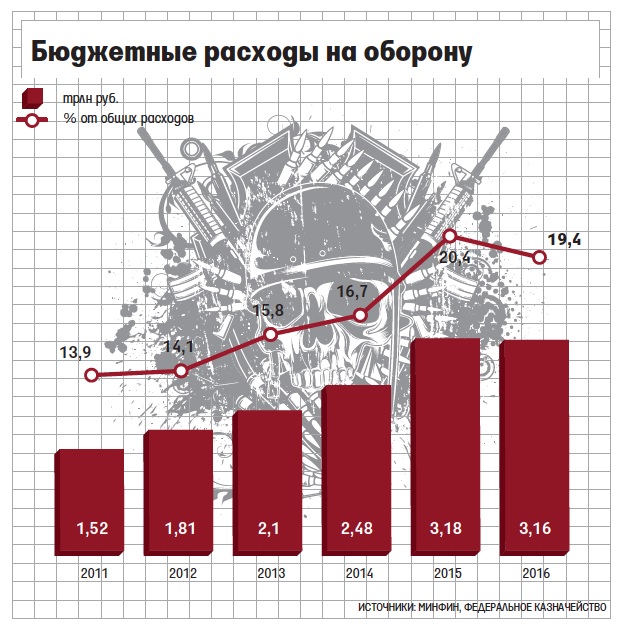 IHS Janes’s story “Russia announces deepest budget cuts since 1990s” got a lot of attention this week, claiming the Russian defense budget will be reduced by $1 trillion rubles or 25%. It is also wrong and has a bombastic headline to boot. Here is a concise assessment of Russia’s defense budget, the cuts, and the reasons.
IHS Janes’s story “Russia announces deepest budget cuts since 1990s” got a lot of attention this week, claiming the Russian defense budget will be reduced by $1 trillion rubles or 25%. It is also wrong and has a bombastic headline to boot. Here is a concise assessment of Russia’s defense budget, the cuts, and the reasons.
Bottom line, the Russian defense budget is going from 3.07 trillion RUB in 2016, to 2.84 trillion RUB in 2017, a reduction of ~7%, which about 1% harsher than announced in October of last year. The original estimate for the 2017-2019 budget plan was a 6% reduction over that period of defense spending. The cuts amount to about 230 billion RUB.
The Russian defense budget is undergoing a sequester to tamp down growth, but is not experiencing large scale cuts, especially relative to other federal departments who were dealt 10% reductions.
The defense budget in 2016 was 3.09 trillion RUB. However, Russia had a problem with debt in the defense industrial complex. Manufacturers had been withdrawing commercial loans to cover the costs of production (i.e. they must have been producing on IOUs from the MoD), but this resulted in financing costs, and those costs were being carried over into the price of equipment being produced. This was no small issue, the interest rate + inflation resulted in some notable costs to the manufacturers, and financing this debt was having a waterfall effect on the state armament program.
Eventually the ministry of finance had to pay them down, so in December 2016 they made a onetime payment of 700 billion RUB to clear this debt (though some sources average it up to 800 billion). Added to 3.09 budgeted, this brought the overall amount spent on national defense to ~3.9 trillion RUB in 2016. Statistically, that resulted in a spike of spending to 4.7% of GDP, but in reality an important chunk was this singular debt payment.
The budget figures announced for 2017 reduce the budget by 7%, to 2.84 trillion. Janes did the following math, 3.9 trillion – 2.84 = 1 trillion RUB reduction or -25%. To put it mildly, that is not the right interpretation of what is happening. The annual planned reduction is really just north of 200 billion RUB.
The future planned reductions are much smaller at 3.2% in 2018, and 4.8% for 2019. This would amount to 3% and 2.8% of GDP respectively, and perhaps 17% of the government budget. Though the figures do not include other spending on national security. My understanding is that these were based on really low oil prices of 40/barrel as well.
However, based on the past two years the defense budget is probably going to be reduced by less. 2015 saw only a 3.8% reduction, and 2016 a 5% reduction, relative to much louder announcements. Meaning, we should expect MoD to claw back some % points from Ministry of Finance planning. Here IHS Janes also seems to indicate that the 2017 defense budget is the first significant reduction after a period of extended growth, when in reality it is the 3rd straight year of budget reductions, and when everything is reconciled, the degree to which it is a reduction is debatable.
We should note there is always inflation, which is a tax on everything, and it is steadily eating away at the budget. The real sequester is the inflation rate that the budget must absorb.
I would add that by spending to reduce the defense sector’s debt, the MoD in reality has also reduced its procurement costs for the future so it’s unclear how the 7% reduction in the budget plays out relative to likely lower purchase prices since the budget is no longer forced to absorb financing costs for these debts. In conclusion, the Russian defense budget will remain very much alive, while the state armament program will continue to truck along with reduced expectations.
No comments:
Post a Comment